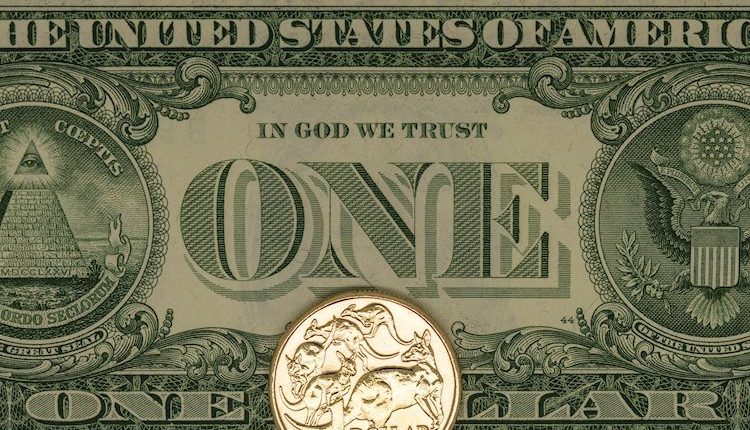- The US Dollar Index has pulled back from its yearly high, helping to limit the decline of the Aussie Dollar.
- Weak Australian labor data pushes the pair downwards on Friday.
- Hawkish bets on the RBA might also help the Aussie.
The AUD/USD pair rose by 0.20% to 0.6460 in Friday’s session. The Australian Dollar staged a comeback as the US Dollar Index (DXY) pulled back from its yearly highs. However, the Aussie Dollar may face challenges due to recent weak domestic and Chinese economic data. On the bright side, Reserve Bank of Australia (RBA) Governor Bullock stated that current interest rates will remain unchanged until the bank gains confidence in the inflation outlook.
Weak Australian labor data, released on Friday, revealed a loss of 8,100 jobs during October, adding to concerns over the strength of the Australian economy. This, coupled with disappointing Chinese data, could cap the recovery of the Aussie Dollar in the near term. Despite these headwinds, the recent hawkish comments from RBA Governor Bullock, who hinted at the possibility of further rate hikes to tame inflation, could provide some support for the Australian Dollar.
Daily digest market movers: Australian Dollar rebounds on weaker US Dollar Index after Retail Sales
- The AUD rebounds against the USD on Friday.
- The USD softens despite better-than-expected US Retail Sales data ahead of the crucial holiday shopping season.
- US Retail Sales expanded by 0.4% in October, exceeding expectations and surpassing September’s growth.
- Retail Sales Control Group contracted by 0.1%, while excluding Autos sales grew 0.1% MoM, below consensus.
- Traders pare back bets on another Fed interest rate cut in December due to Powell’s remarks.
- Markets price in a 25 bps RBA cut only in May 2025, which diverged with the markets’ bet on the Fed, which could eventually help the Aussie.
AUD/USD technical outlook: Pair sees some light, outlook still negative
While the brief recovery toward 0.6460 provided temporary respite, the AUD/USD pair remains firmly within a downtrend. Key technical indicators like the Relative Strength Index (RSI) and Moving Average Convergence Divergence (MACD) continue to reside deep within bearish territory, highlighting the dominance of selling pressure. This technical outlook implies that the corrective bounce is likely to be short-lived, with the path of least resistance remaining to the downside.
Australian Dollar FAQs
One of the most significant factors for the Australian Dollar (AUD) is the level of interest rates set by the Reserve Bank of Australia (RBA). Because Australia is a resource-rich country another key driver is the price of its biggest export, Iron Ore. The health of the Chinese economy, its largest trading partner, is a factor, as well as inflation in Australia, its growth rate and Trade Balance. Market sentiment – whether investors are taking on more risky assets (risk-on) or seeking safe-havens (risk-off) – is also a factor, with risk-on positive for AUD.
The Reserve Bank of Australia (RBA) influences the Australian Dollar (AUD) by setting the level of interest rates that Australian banks can lend to each other. This influences the level of interest rates in the economy as a whole. The main goal of the RBA is to maintain a stable inflation rate of 2-3% by adjusting interest rates up or down. Relatively high interest rates compared to other major central banks support the AUD, and the opposite for relatively low. The RBA can also use quantitative easing and tightening to influence credit conditions, with the former AUD-negative and the latter AUD-positive.
China is Australia’s largest trading partner so the health of the Chinese economy is a major influence on the value of the Australian Dollar (AUD). When the Chinese economy is doing well it purchases more raw materials, goods and services from Australia, lifting demand for the AUD, and pushing up its value. The opposite is the case when the Chinese economy is not growing as fast as expected. Positive or negative surprises in Chinese growth data, therefore, often have a direct impact on the Australian Dollar and its pairs.
Iron Ore is Australia’s largest export, accounting for $118 billion a year according to data from 2021, with China as its primary destination. The price of Iron Ore, therefore, can be a driver of the Australian Dollar. Generally, if the price of Iron Ore rises, AUD also goes up, as aggregate demand for the currency increases. The opposite is the case if the price of Iron Ore falls. Higher Iron Ore prices also tend to result in a greater likelihood of a positive Trade Balance for Australia, which is also positive of the AUD.
The Trade Balance, which is the difference between what a country earns from its exports versus what it pays for its imports, is another factor that can influence the value of the Australian Dollar. If Australia produces highly sought after exports, then its currency will gain in value purely from the surplus demand created from foreign buyers seeking to purchase its exports versus what it spends to purchase imports. Therefore, a positive net Trade Balance strengthens the AUD, with the opposite effect if the Trade Balance is negative.
Read the full article here

